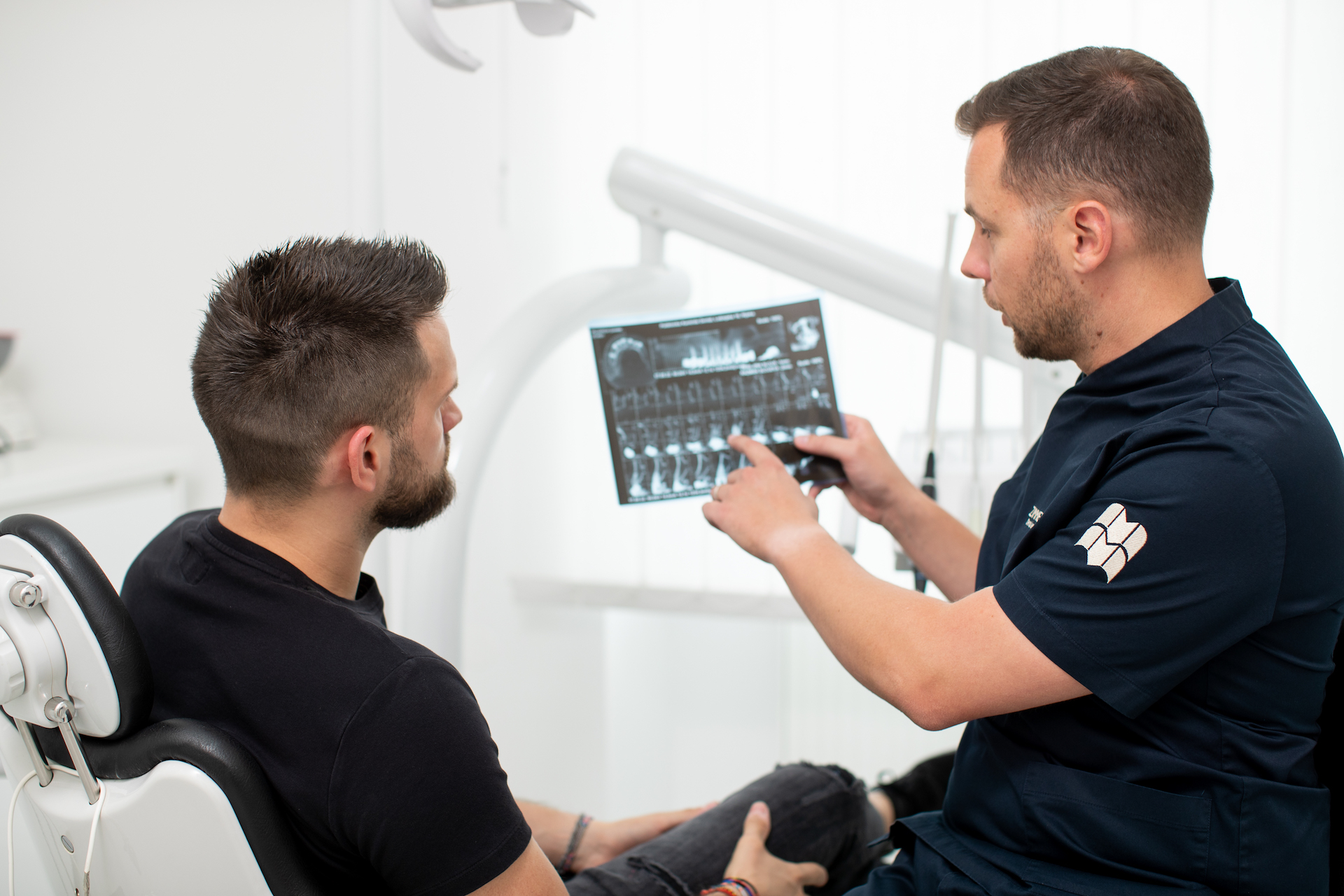
Oral surgery and periodontology
20.11.2022.Prosthetics
What do prosthetics in dentistry mean?
Prosthetics in dentistry deal both with function and aesthetics. We address various concerns such as tooth loss, tooth colour, and tooth shape through prosthetic procedures. Prosthetics can overlap with implantology and other dental branches depending on the specific problem and diagnosis we are addressing. Dental prosthetics are both complex and beautiful field, as it involve working within the limited space of the oral cavity while ensuring functionality and aesthetic appeal. The goal of dental prosthetics is to create prosthetic works such as crowns, bridges, or dentures that closely resemble to natural teeth, while also optimising their essential functions of chewing and biting.
Prosthetic solutions are basically crown, bridge on existing teeth, crown on one dental implant, bridge on more dental implants, fixed or mobile prothesis and combined prosthetic work which includes crown and prothesis combination. Accordingly, prosthetics are divided into fixed prosthetics, mobile prosthetics and combined prosthetics.
Fixed prosthetics
Fixed prosthetics include prosthetic work which remain permanently fixed in oral cavity and the patients cannot independently remove them from the oral cavity.
In fixed prosthetics, there are two types of anchoring elements: additionally reshaped existing teeth and/or dental implants. That’s why fixed prosthetics are divided in two main categories, so patients could understand it more easily:
FIXED RESTORATIONS WITH DENTAL IMPLANTS
FIXED RESTORATIONS WITHOUT DENTAL IMPLANTS

ORAL SCANNER - trishape TRIOS
In dentistry, digitalisation has become an essential requirement for successful prosthetic and implant-prosthetic treatments. The digital scanner is a component of digital technology that is not yet widely available in many dental practices in Rijeka and its surrounding areas.
Why do we use oral scanner?
Physical impressions for temporary and/or fixed/mobile prosthetic work are gradually becoming obsolete. Now, instead of using traditional impressions, we are using a dental scanner to scan the entire jaw. The acquired data can then be processed as needed and sent to the dental laboratory, where crowns, bridges, or prostheses can be fabricated. The remarkable feature of this device lies in its precision, with minimal margin for error. With no more repetitive impressions required, a simple two-minute scan is sufficient for the technician to create your new smile. In addition to the enhanced accuracy, patients also benefit from avoiding the discomfort associated with impression materials typically used during traditional impressions.
Mobile prosthetics
Mobile prosthetics refer to prosthetic works that are not permanently affixed or cemented in the oral cavity, allowing patients to remove them independently for oral hygiene maintenance. Mobile prosthetic works are categorised into:
- Complete dentures
- Partial dentures
- Prostheses with a metal base, commonly known as wiron or wironit prostheses.
Combined prostethics
Combined prosthetics, as the name implies, involves a combination of fixed and removable prosthetic work.
Typically, the fixed component consists of dental crowns or bridges, while the removable component includes a partial metal or acrylic prosthesis. The removable part, also known as attachments, is connected to the fixed portion using special hooks.
Patients have the ability to independently remove the mobile component to maintain oral hygiene.


